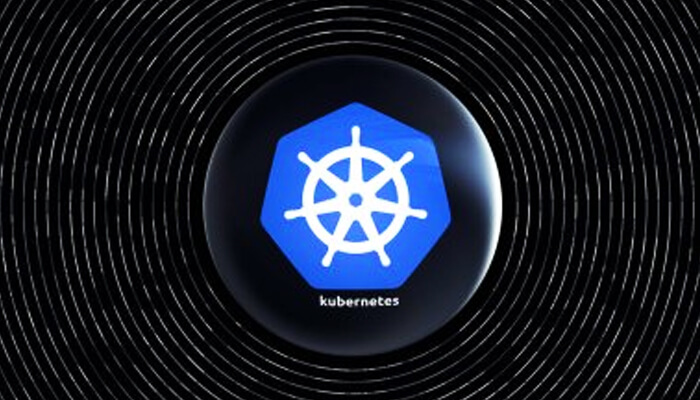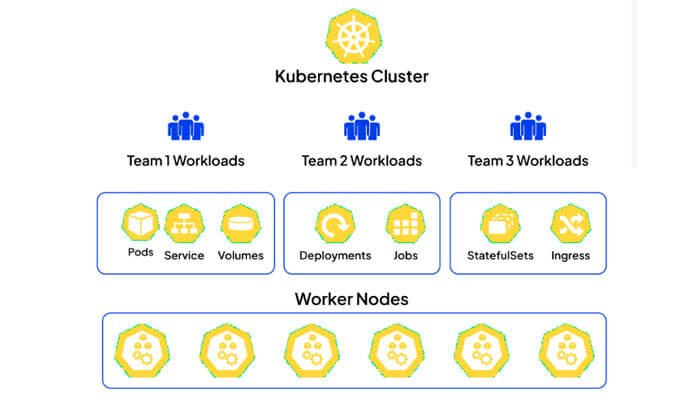Kubernetes has risen to prominence as an indispensable tool for container orchestration, providing a powerful and flexible platform to manage and scale applications effectively. With its wide range of capabilities, Kubernetes stands out for its exceptional support for multi-tenancy, allowing multiple teams or individuals within an organization to share a Kubernetes cluster seamlessly.
This comprehensive article will develop the fundamental concepts of Kubernetes multi-tenancy, explore its intricacies, and shed light on practical implementation strategies. By gaining valuable insights into multi-tenancy nuances, you will be equipped with the knowledge and expertise to optimize your Kubernetes environment and drive greater efficiency within your organization.
What is Kubernetes multi-tenancy?
Kubernetes multi-tenancy refers to how multiple tenants, like teams or individuals within an organization, share a single Kubernetes cluster. This approach offers notable cost savings and streamlined administration. Nevertheless, it’s important to note that Kubernetes lacks built-in support for end users or tenants. Implementing multi-tenancy requires meticulous planning and configuration.
Types of Multi-Tenancy in Kubernetes
There are two primary ways to implement multi-tenancy in Kubernetes: soft and hard.
1: Soft Multi-Tenancy
Soft multi-tenancy is suited for environments with high trust between the tenants. It doesn’t have rigorous isolation between the tenants, relying more on their responsible use of shared resources.
2: Hard Multi-Tenancy
On the other hand, hard multi-tenancy is designed for environments where strict isolation is required between tenants. This approach involves creating stronger boundaries between tenants, ensuring a tenant cannot access or impact another tenant’s resources.
Fundamental Essentials For Kubernetes Multi-Tenancy
Several fundamental essentials play a crucial role in Kubernetes multi-tenancy. Understanding these essentials can help create a robust and secure multi-tenant environment.
1: Namespaces
Namespaces offer a way to divide cluster resources among multiple users. Each namespace provides a scope for names of resources, ensuring that these do not overlap with others.
2: Role-Based Access Control
RBAC is a mechanism for controlling access to the Kubernetes API based on the roles assigned to individual users. RBAC ensures that only authorized users can perform specific actions.
3: Resource Quotas
Resource quotas provide a way to limit the amount of compute resources that a tenant can use in a namespace, preventing one tenant from consuming all available resources.
4: Virtual Clusters and Cost Tracking
Virtual clusters are a form of isolation that allows each tenant to have their dedicated Kubernetes control plane. This approach provides additional security and isolation, ideal for hard multi-tenancy environments. Additionally, cost-tracking tools can help monitor resource usage and distribute costs appropriately among tenants.
Implementing Multi-Tenancy in Kubernetes
Successfully implementing multi-tenancy in Kubernetes necessitates meticulous planning and configuration. It is crucial to follow a systematic approach to establish a multi-tenant Kubernetes cluster. This includes creating namespaces, configuring role-based access control, and setting resource quotas. Adhering to these steps can effectively set up a secure and efficient multi-tenant environment in Kubernetes.
Understanding Key Concepts Of Kubernetes Multi-Tenancy
While Kubernetes lacks native support for multi-tenancy, understanding these fundamental concepts and embracing best practices can empower you to establish a multi-tenant environment effectively. Through careful planning and the utilization of appropriate tools, Kubernetes multi-tenancy can provide significant benefits, including cost savings and streamlined administration.




